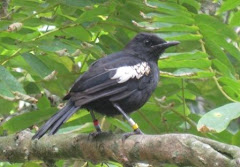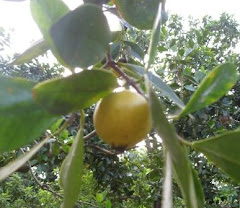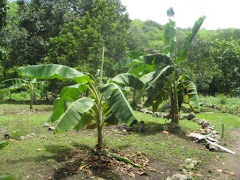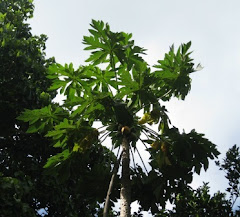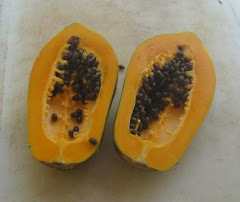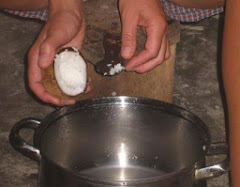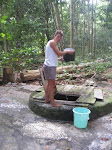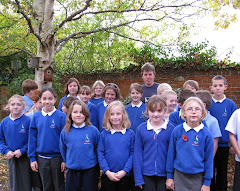
The island changes in the southeast monsoon as the vegetation starts to struggle from a lack of water, the trees go brown and their leaves start to fall, it reminded me of autumn back in the UK, but it was still 30’C! Eventually only the bare branches of the trees are left and looking at the island from the sea it looks sad and dry, scorched by both the sun and the salt spray.

However Aride comes alive at this time of year with wildlife, it is the main breeding time for the seabirds that nest on the island. We have the world’s largest colony of lesser noddys and over 100,000 pairs of sooty terns, not to mention the brown noddys, fairy terns and bridled terns. So Aride becomes both a very busy, noisy and smelly place between May to October.
With the strong winds it means that the large expanse of sea becomes very rough and it is difficult to both launch and land the boat off and on to the island. With no jetty we have to launch the boat by hand, holding it still in the waves until the engine is deep enoug h in the water to run. It is a difficult task when there are waves taller than you trying to knock you off your feet, but it is the only way we can leave to go shopping and get supplies. Some years the sea is so rough at this time of year we don’t manage to leave the island for two weeks or more and so we have to make our food last. At this time the vegetables we grow in the garden are very important as a fresh food supply.
h in the water to run. It is a difficult task when there are waves taller than you trying to knock you off your feet, but it is the only way we can leave to go shopping and get supplies. Some years the sea is so rough at this time of year we don’t manage to leave the island for two weeks or more and so we have to make our food last. At this time the vegetables we grow in the garden are very important as a fresh food supply.
 h in the water to run. It is a difficult task when there are waves taller than you trying to knock you off your feet, but it is the only way we can leave to go shopping and get supplies. Some years the sea is so rough at this time of year we don’t manage to leave the island for two weeks or more and so we have to make our food last. At this time the vegetables we grow in the garden are very important as a fresh food supply.
h in the water to run. It is a difficult task when there are waves taller than you trying to knock you off your feet, but it is the only way we can leave to go shopping and get supplies. Some years the sea is so rough at this time of year we don’t manage to leave the island for two weeks or more and so we have to make our food last. At this time the vegetables we grow in the garden are very important as a fresh food supply. With the strong winds and the rough sea there is a lot of salt spray that gets blown on to the island, this puts a greasy, salty film over everything, from the vegetables in the garden, which we have to protect, to our clothes. The spray is driven by the wind into the houses and the office and can be very damaging, by causing everything to rust and go mouldy.
The southeast monsoon can be a very difficult time to live on the island, the wind and salt spray are constant and we know that we will not be able to go over to the mainland very frequently. That is when the telephone and electronic communication become very important as we are unable to receive letters via the post office.
 It is often the case that because the sea is rough we rarely get visitors to the island and so it can feel quiet remote, even though we can see Praslin the island 6 miles away, we know the sea is to difficult to cross. Our work at this time of year is spent undertaking survey and monitoring work, mainly of the seabird colony, counting 1.25 million seabirds is quiet a difficult task and protecting them from poachers. We also spend time designing new displays and preparing the island for visitors, who will start to come once more in October.
It is often the case that because the sea is rough we rarely get visitors to the island and so it can feel quiet remote, even though we can see Praslin the island 6 miles away, we know the sea is to difficult to cross. Our work at this time of year is spent undertaking survey and monitoring work, mainly of the seabird colony, counting 1.25 million seabirds is quiet a difficult task and protecting them from poachers. We also spend time designing new displays and preparing the island for visitors, who will start to come once more in October.However having said all this, the most significant thing for everyone living on the island in the southeast monsoon i s whether we have collected enough water to see us through this dry season. For 5 months we will not have any rain and so we will not have any new drinking water and we rely on the water that we have collected through the rainy season of the northwest monsoon. If we do have rain we are often unable to harvest it because the roof is too dirty from all the seabirds that roost there and it would be unsuitable to drink. This year we have been struggling for drinking water and we now have to boil the water and pass it through two filters, before we can drink it. This is quite a time consuming job as working in 32°C means we have to drink regularly to prevent us from becoming too dehydrated. Think now we are finding out how Aride got its’ name!
s whether we have collected enough water to see us through this dry season. For 5 months we will not have any rain and so we will not have any new drinking water and we rely on the water that we have collected through the rainy season of the northwest monsoon. If we do have rain we are often unable to harvest it because the roof is too dirty from all the seabirds that roost there and it would be unsuitable to drink. This year we have been struggling for drinking water and we now have to boil the water and pass it through two filters, before we can drink it. This is quite a time consuming job as working in 32°C means we have to drink regularly to prevent us from becoming too dehydrated. Think now we are finding out how Aride got its’ name!
 s whether we have collected enough water to see us through this dry season. For 5 months we will not have any rain and so we will not have any new drinking water and we rely on the water that we have collected through the rainy season of the northwest monsoon. If we do have rain we are often unable to harvest it because the roof is too dirty from all the seabirds that roost there and it would be unsuitable to drink. This year we have been struggling for drinking water and we now have to boil the water and pass it through two filters, before we can drink it. This is quite a time consuming job as working in 32°C means we have to drink regularly to prevent us from becoming too dehydrated. Think now we are finding out how Aride got its’ name!
s whether we have collected enough water to see us through this dry season. For 5 months we will not have any rain and so we will not have any new drinking water and we rely on the water that we have collected through the rainy season of the northwest monsoon. If we do have rain we are often unable to harvest it because the roof is too dirty from all the seabirds that roost there and it would be unsuitable to drink. This year we have been struggling for drinking water and we now have to boil the water and pass it through two filters, before we can drink it. This is quite a time consuming job as working in 32°C means we have to drink regularly to prevent us from becoming too dehydrated. Think now we are finding out how Aride got its’ name!




